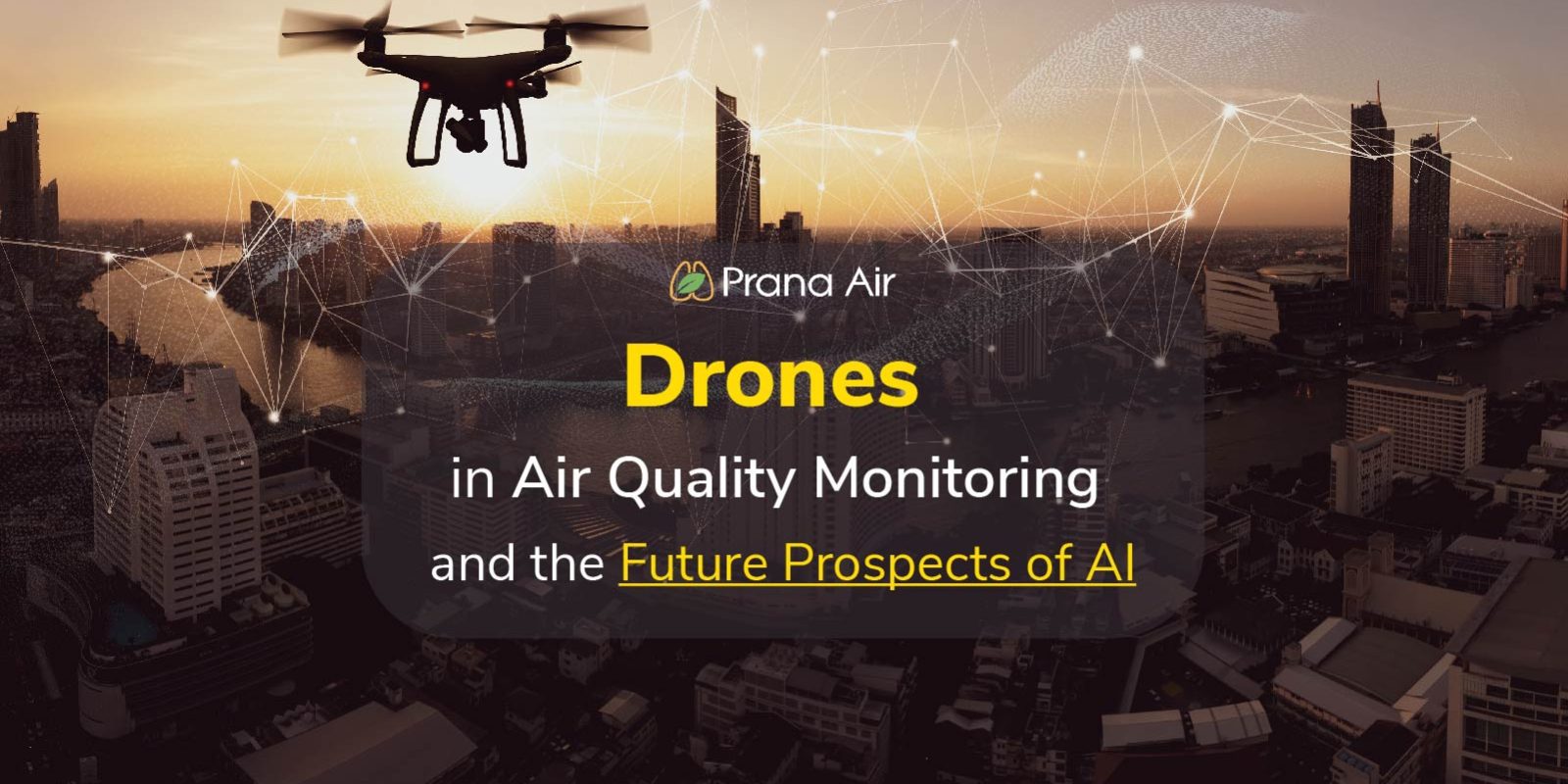In recent years, there has been a growing awareness among people about the degrading air quality and its harmful impacts on health. This has led to a remarkable achievement in the air quality monitoring sector with the introduction of drones. These drones are fitted with highly accurate sensors, enabling precise monitoring of air quality indicators. Moreover, drones offer the advantage of monitoring air quality in areas where establishing physical monitoring stations would require significant effort. As drone technology continues to evolve and improve, the exciting potential arises for combining AI in air quality monitoring and other related applications. Now, let’s delve more into the topic.
Introduction
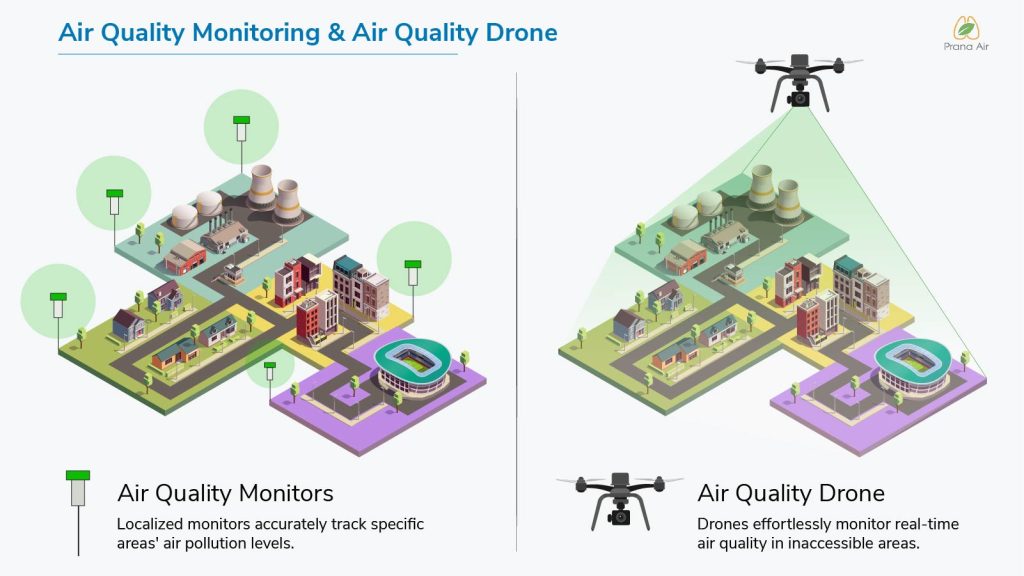
Air quality monitoring involves gathering data on the quality of the air, and analyzing it to identify different types and amounts of pollutants present in the atmosphere. Commonly, monitoring relied on fixed stations, but they have limitations in terms of coverage and flexibility. However, thanks to advancements such as drones, we now can remotely assess air quality in multiple locations. What’s more, air quality drones are creating exciting prospects in areas where setting up traditional monitoring stations is not feasible. With these technological advancements, we are embracing new opportunities to understand and address air pollution more effectively.
Air Quality Drones: Advantages
Improved Movement and Adaptability
Drones offer unmatched mobility compared to traditional monitoring stations. They can be deployed to specific locations of interest, providing real-time data on air quality in various areas. This flexibility allows for overall monitoring, even in hard-to-reach or hazardous locations.
Cost-efficiency
Drones for environmental monitoring are a less expensive option as compared to setting up and running fixed monitoring stations. They can efficiently cover wide regions, reducing the need for many stationary monitoring stations. Drones can also be outfitted with many sensors, which enables multi-parameter observations at once.
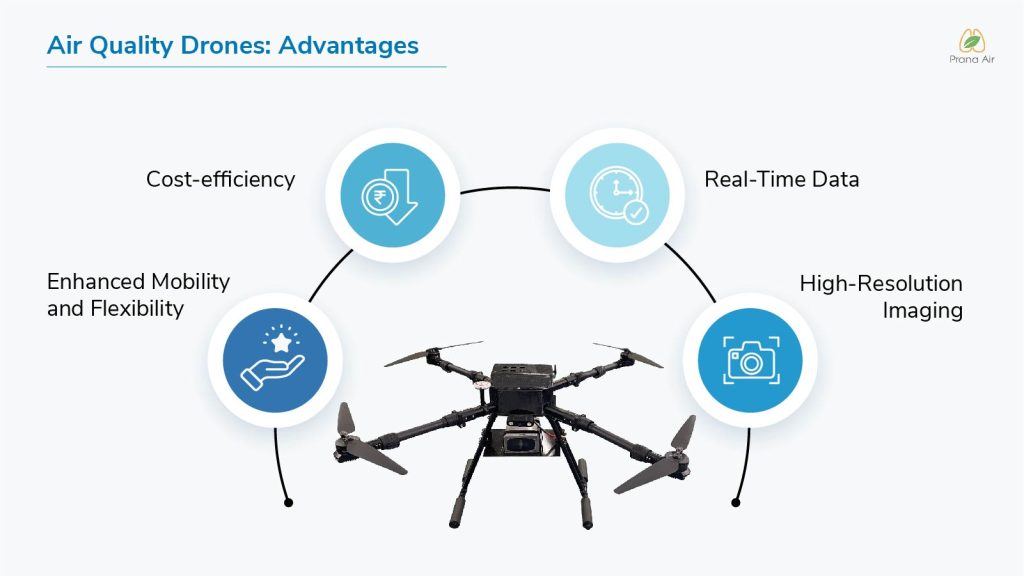
Real-Time Data
Drones equipped with highly accurate and precise sensors can gather real-time data on various air quality indicators. These indicators include parameters such as PM2.5, PM10, NO2, SO2, NH3, O3, CO, etc. This real-time data enables faster response times and allows authorities to address any potential air pollution issues promptly.
High-Resolution Imaging
Apart from collecting air quality data, drones can also capture HD images and videos. These visuals can help in identifying pollution sources, monitoring industrial emissions, and assessing the overall environmental impact of certain activities. The combination of aerial imagery and air quality data provides an overall understanding of the situation.
AI in Air Quality Monitoring
By combining AI with air quality monitoring, drones can experience a significant improvement in their capabilities. AI algorithms possess the ability to effectively analyze the wide range of data collected by drones. They offer valuable insights that can inform decision-making processes. Here are some key applications of AI in this domain:
Analysing Data and Pattern Recognition
The air quality data acquired by drones can be thoroughly analyzed using AI algorithms to find patterns and abnormalities. AI may use this technique to identify pollution hotspots, identify pollution sources, and track changes over time. Furthermore, AI insights are critical in developing efficient air quality management methods. By harnessing the capabilities of AI, decision-makers can gather valuable information that enables them to develop targeted and efficient strategies for addressing and mitigating air pollution challenges. This utilization of AI empowers decision-makers to make informed and impactful choices, leading to effective solutions in fighting air pollution.
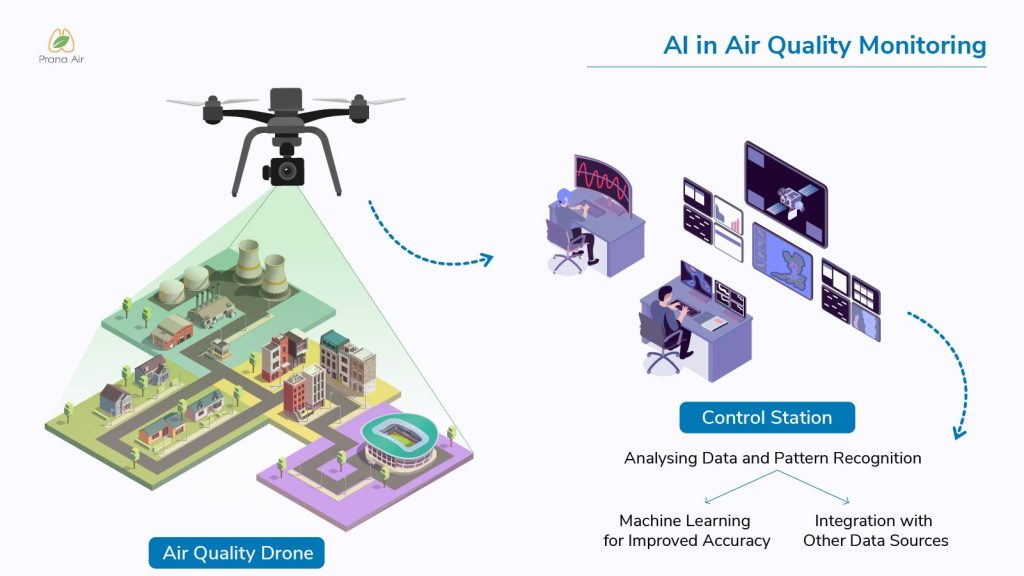
Models based on Predictions and Forecasts
By using historical data and considering numerous environmental aspects, AI can be used to construct predictive models that predict air pollution levels. These models use AI algorithms to assess previous data patterns and add pertinent variables such as weather, geographical aspects, and human activities. These AI-driven models give vital insights for proactive planning and decision-making by anticipating future pollution levels, allowing authorities and communities to implement preventive actions and mitigate potential dangers to air quality.
These models can assist in proactive decision-making, allowing authorities to implement preventive measures before air pollution reaches critical levels.
Integration with Other Data Sources
AI algorithms can integrate air quality data from drones with data from other sources. These include weather conditions, traffic patterns, or industrial activities. This holistic approach provides a complete understanding of the factors influencing air quality, facilitating more targeted and efficient interventions.
The Future Prospects of AI in Air Quality Monitoring
AI technology advancements are closely associated with the development and future of air quality monitoring. Following are some potential developments that hold promise for the future:
Independent Drone Networks
We are expecting the introduction of automated drone systems for air quality monitoring as AI continues to evolve. These networks would be made up of numerous drones working together to cover wider areas and collect more data. This collaborative effort also aims to achieve speedy and thorough environmental monitoring. Drones may ensure that the data they acquire is collected in the most efficient way possible by sharing data and coordinating their actions. This method improves the accuracy and scope of the obtained data, resulting in better insights and decision-making.
Machine Learning (ML) for Improved Accuracy
Machine Learning or ML algorithms are critical for improving the accuracy of air quality monitoring. By continuously assessing and learning from the collected data, AI systems can refine their models and improve their ability to detect patterns, identify pollution sources, and predict air pollution levels. This iterative learning process can lead to more accurate and reliable monitoring outcomes.
Integration with Smart City Initiatives
As the movement towards smart and sustainable cities gains traction, the integration of air quality monitoring drones seems increasingly probable. Equipped with AI-powered sensors, these drones can gather real-time data that easily integrate into urban infrastructure and decision-making systems. This integration further facilitates swift actions, such as optimizing traffic flow, adjusting industrial operations, or notifying residents of pollution spikes. By using these advanced technologies, cities can proactively address air quality concerns and ensure a healthier environment for their citizens.
Environmental Impact Assessments
Drones bring a host of benefits to air quality monitoring, such as increased mobility, cost-effectiveness, real-time data collection, and high-resolution imaging capabilities. And when combined with AI systems, drones become even more powerful. AI analyzes the data gathered by drones, identifies patterns, and generates predictions. But that’s not all! The future holds even more exciting prospects. We can expect the emergence of independent drone networks, leveraging advancements in machine learning (ML) for improved accuracy. These networks will integrate seamlessly with smart city initiatives and facilitate advanced environmental impact assessments. As we continue to harness the power of technology, air quality monitoring will become more efficient, proactive, and impactful in creating a cleaner and healthier environment for everyone.
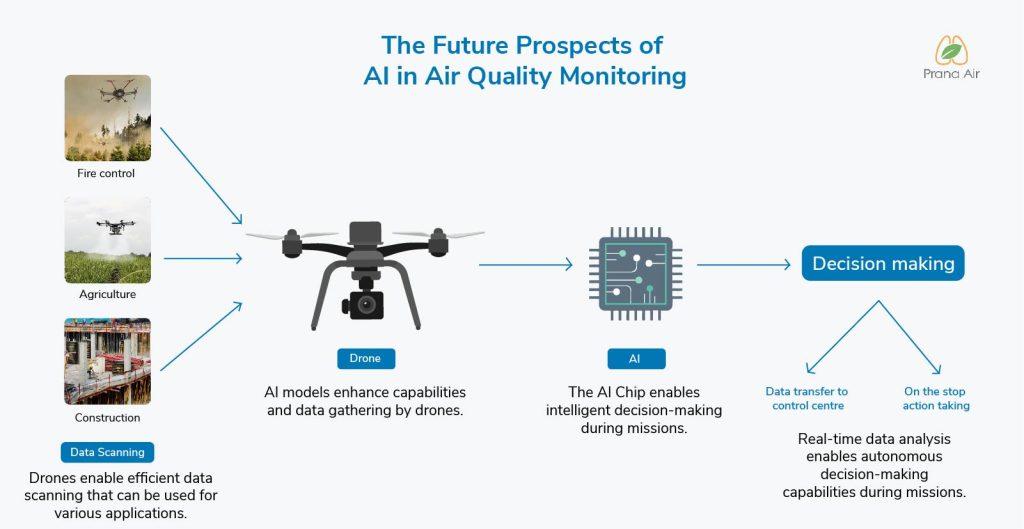
Conclusion
Drones bring a host of benefits to air quality monitoring, such as increased mobility, cost-effectiveness, real-time data collection, and high-resolution imaging and videography capabilities. And when combined with AI systems, drones become even more powerful. AI analyzes the data gathered by drones, identifies patterns, and generates predictions. But that’s not all! The future holds even more exciting prospects. We can anticipate the development of autonomous drone networks and improved accuracy through machine learning. Additionally, there will be integration with smart city initiatives and the implementation of advanced environmental impact assessments. As we continue to harness the power of technology, air quality monitoring will become more efficient, proactive, and impactful. This progress will contribute to creating a cleaner and healthier environment for everyone.
To know more about the air quality drone, learn more about Prana Air’s Drone.

